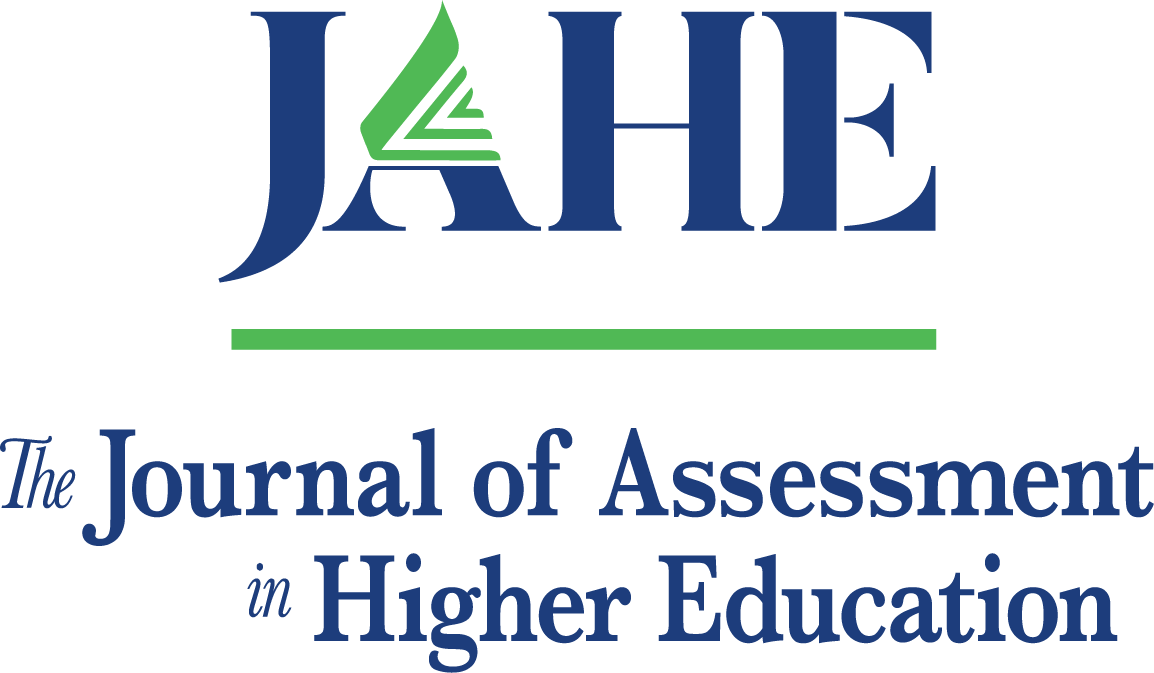Archives
-
The Journal of Assessment in Higher Education
Vol. 2 No. 1 (2021)Welcome to the second edition of the Journal of Assessment in Higher Education.
We are pleased to present four articles from authors across the fields of higher education who represent a range of perspectives, research, practice, and institutions.
Student course evaluations can be a high stakes measure for faculty. Calvin D. Carpenter, Western Carolina University, shares his institution’s systematic approach to examine the process and use of student course evaluation data. Their work resulted in significant changes to how this information is used.
Rating scales are a primary assessment tool used in medical education to gather evidence of student competency acquisition. Chosang Tendhar, Hackensack Meridian School of Medicine, shares a study of the utility of intern self-appraisals and Program Director ratings. Tendhar’s analysis reveals some areas of agreement in both rating approaches, and the results provide validity evidence for the use of these tools for this purpose.
Teacher educators prepare students for success in the classroom, and this includes teaching students how to use and apply assessment effectively in teaching. Kelly Anne Parkes, Teachers College, Columbia University, and Jared R. Rawlings, University of Utah, present their examination of what music teacher educators in higher education (N = 149) understand about assessment and their assessment pedagogy efficacy. They discovered that music teacher educators hold varied understandings about assessment but have a generally high level of personal and programmatic assessment pedagogy efficacy.
As institutions work to institutionalize assessment processes and practices, a primary focus is to engage existing technology to the extent possible to automate this process. Fred Burrack and Dorothy J. M. Thompson, Kansas State University, share their institutional use of the Canvas Learning Management System to make the data collection and submission process easier for faculty. The authors provide a clear model of how they maximize Canvas features to facilitate faculty assessment data reporting on their campus.
We hope you find that these articles contribute to the advancement of your work and research as well as to the growing body of literature on assessment in higher education. Our next volume will present selected papers from the March 2021 annual University of Florida Assessment Conference. Until then, Laura and I wish you a safe and happy year.
Timothy S. Brophy, Co-Editor, Journal of Assessment in Higher Education
-

Journal of Assessment in Higher Education
Vol. 1 No. 1 (2020)Inaugural issue of the Journal of Assessment in Higher Education.
-
Vol. 3 No. 1 (2022)
On behalf of The Journal of Assessment in Higher Education editorial team, I present volume 3, issue 1.
Erika Carlson kicks off this third issue of The Journal of Assessment in Higher Education, with a look at personalized coaching models with questions about how to best employ these methods. The author examines existing literature to identify core components of successful coaching models, with a finding that points to greater access to student learning outcome data.
The Plan-Do-Study-Act (PDSA) assessment framework is examined as one application of “continuous improvement” research, studied by Drescher and Chang. Their longitudinal work features the use of PDSA cycles in pre-service education in higher education, with outcomes that reveal benefits and challenges for collaboration and co-teaching. They present a three-year, iterative process for continuous improvement and modifications to physical space, and the implications for pre-service education modifications.
Klein, Komaroff, Robertson and Keintz apply Game Theory in an analysis of learners’ perceptions of peer assessment, using multiple variables including participants’ institution of higher learning’s prestige, its competitiveness in the higher education rankings and its extent of grade inflation. Factor analysis was employed to validate these constructs and the discuss of findings provide some provocative observations.
Pasmantier and Di Liberto examine students’ ability to communicate in writing. Analyzing the data during the COVID-19 remote learning period, the examiners take into consideration the impact of online learning to understand student outcomes within “writing intensive” courses. The researchers conducted statistical analyses to understand differences in students’ scores.
Pereira, Santos, Almeida-Aguiar, and Flores conduct multimethod testing of undergraduate students and their perceptions of assessment in the Biology classroom. They extensively examine the engagement of students with traditional assessment methods, resulting in findings that have true practical implications. Particularly interesting are the sample respondent comments, in part, suggesting that students value being assessed.
We hope that you enjoy this issue and we look forward to a fourth issue coming very soon!
Laura I. Spears, PhD.
Co-editor, The Journal of Assessment in Higher Education

